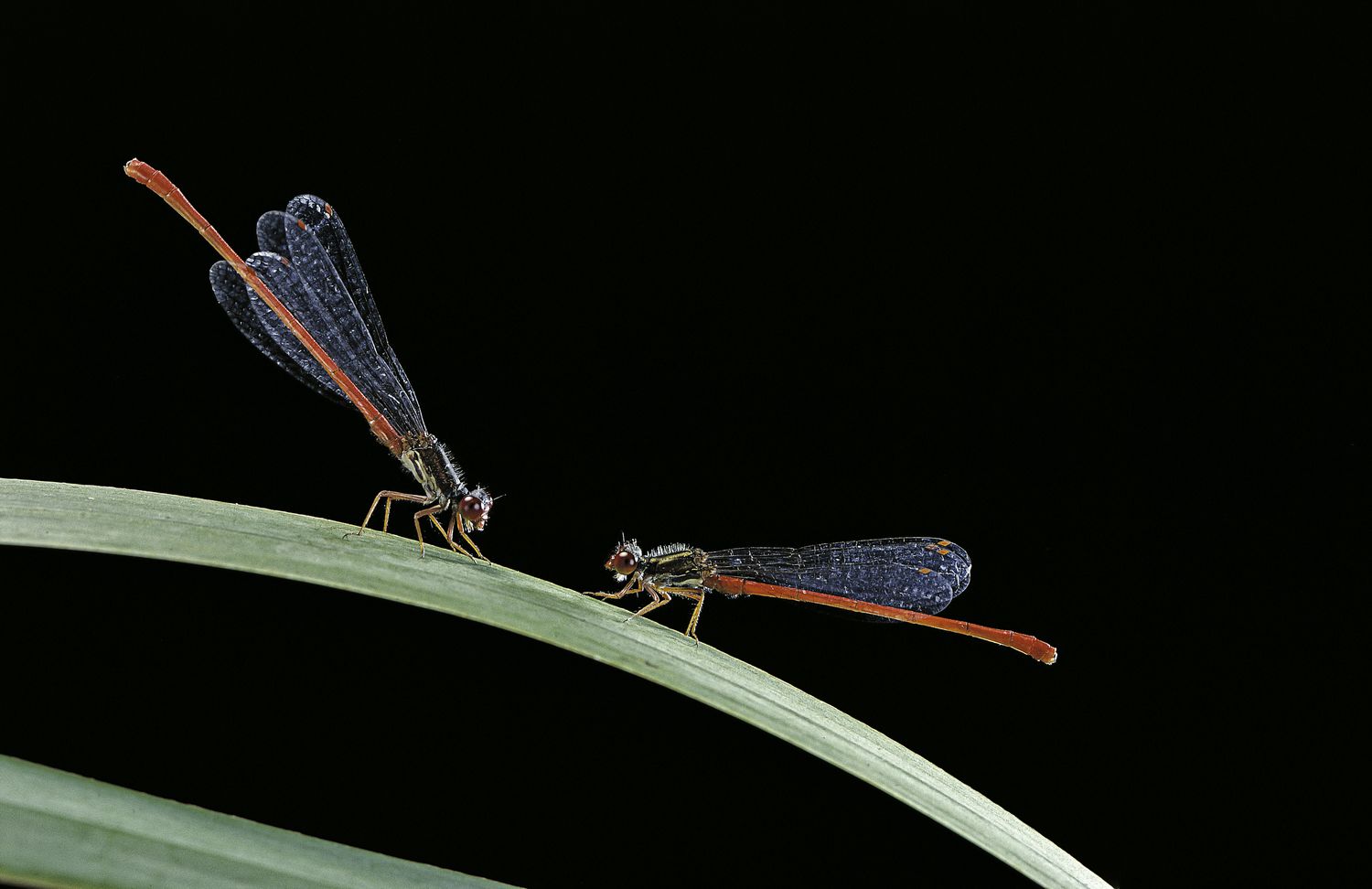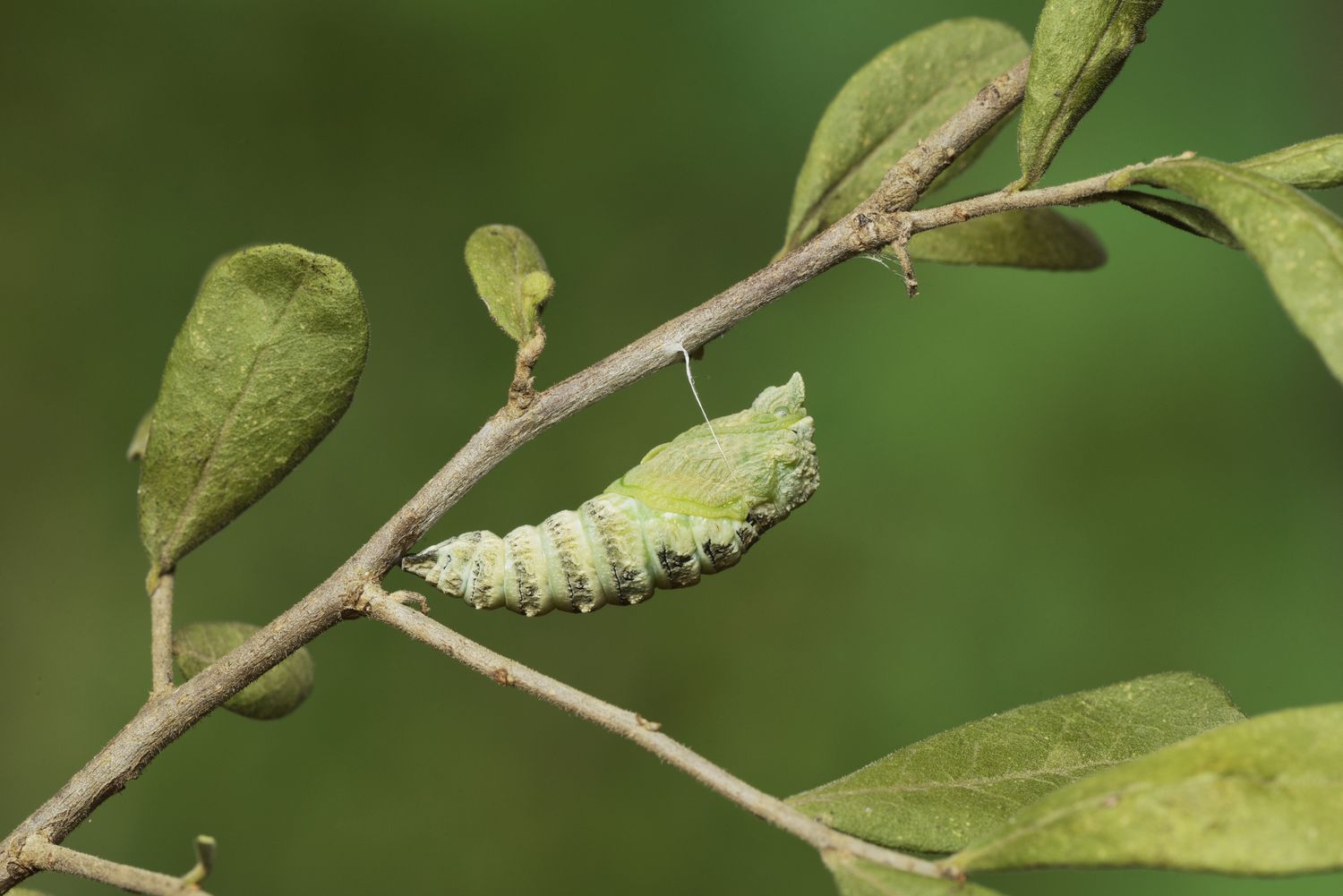Home>Gardening News and Trends>Latest News>Which Insects Are Considered Bad Luck


Latest News
Which Insects Are Considered Bad Luck
Published: November 28, 2023
Discover the latest news on which insects are considered bad luck. Explore the belief systems and cultural significance surrounding these creatures for an intriguing insight into superstitions worldwide.
(Many of the links in this article redirect to a specific reviewed product. Your purchase of these products through affiliate links helps to generate commission for Chicagolandgardening.com, at no extra cost. Learn more)
Table of Contents
Introduction
Throughout history, humans have developed various superstitions and beliefs surrounding different aspects of life. One area where these superstitions often emerge is in our perceptions of certain insects. Insects have long been associated with symbolism and interpretation, and some have gained a reputation for bringing bad luck.
While different cultures may have their own unique beliefs, there are some insects that seem to commonly be associated with superstitions and considered a harbinger of ill fortune. These beliefs can vary from culture to culture and can evolve over time, but they often stem from deep-rooted cultural, religious, and historical influences.
In this article, we will explore the world of insects and delve into the insects that are considered to bring bad luck. We will look into the historical and cultural beliefs surrounding these insects and seek to understand the reasoning behind why they are associated with misfortune.
It is important to note that these beliefs are steeped in tradition and are not based on scientific evidence. However, these superstitions and beliefs have ingrained themselves in our collective consciousness, shaping the way we perceive these tiny creatures.
So let us embark on this journey and discover the insects that have been considered bad luck throughout different cultures and generations. It’s time to delve into the intriguing world of superstitions and the insects that carry the burden of being perceived as symbols of doom.
Historical Beliefs and Superstitions
Insects have captivated human curiosity and imagination for centuries. They have been the subject of myth, folklore, and superstition in various cultures around the world. The association of certain insects with bad luck can be traced back to ancient times.
Ancient civilizations like the Egyptians and Greeks believed that insects held symbolic meanings and could influence human fate. For example, the Egyptians saw beetles as a symbol of transformation and rebirth, while the Greeks associated them with good fortune and protection.
During the medieval period, when religious influences were strong, insects were often seen as divine messengers or omens. The appearance of certain insects was believed to foretell impending doom or misfortune. People would interpret their presence as a warning sign, and it often led to rituals or precautions to ward off the impending bad luck.
In many cultures, spiders have been associated with fear and unease. This can be traced back to European beliefs that spiders were connected to witches and dark magic. Their presence was seen as a sign of evil and impending danger. Even today, in some cultures, encountering a spider is considered an omen of bad luck.
Similar superstitions surround other insects like bees and moths. In some cultures, a bee entering a home was believed to bring financial loss or trouble. Moths were seen as symbols of death and decay, and their presence was thought to herald tragedy or illness.
Superstitions surrounding insects are not limited to just negative connotations. For example, ladybugs have long been associated with good luck in many cultures. In some European traditions, spotting a ladybug was believed to bring good fortune and protection from harm.
These historical beliefs and superstitions provide a glimpse into the complex relationship between humans and insects. They reveal the profound impact that these tiny creatures have had on shaping cultural beliefs and practices.
While many of these beliefs may seem irrational or unfounded from a scientific standpoint, they continue to influence our perceptions of insects and their association with bad luck. Let us now delve deeper into the specific insects that have gained a reputation for bringing misfortune in different cultures.
Insects Associated with Bad Luck
Superstitions surrounding insects vary across different cultures, but certain insects have garnered a reputation for being considered bad luck. These beliefs may have originated from historical, cultural, or even personal experiences. Let’s explore some of these insects that have been associated with bringing misfortune:
-
Spiders:
Spiders are perhaps one of the most common insects associated with bad luck. This belief can be traced back to various cultural beliefs and folklore. In many cultures, encountering a spider was seen as an omen of danger, misfortune, or even death. Some even believed that killing a spider would bring about even worse luck.
-
Bees:
While bees are generally seen as beneficial insects due to their role in pollination, they are perceived as symbols of bad luck in some cultures. For example, in certain European folk beliefs, having a bee enter your home was believed to bring financial loss or trouble. This association may stem from the fear of getting stung by a bee and the painful consequences that may follow.
-
Moths:
Moths, with their nocturnal nature and attraction to light, have often been associated with darkness and death. In many cultures, encountering a moth indoors was seen as a harbinger of impending tragedy or illness. Their association with dark corners and their tendency to damage clothing further reinforced the belief that they brought bad luck.
-
Crickets:
While crickets are typically seen as harmless creatures, they have been associated with bad luck in some cultures. For example, in some Asian cultures, the presence of crickets inside a house is believed to be an unlucky sign, as their chirping was thought to be a forewarning of death or illness in the family.
-
Butterflies:
Butterflies, often considered as symbols of beauty and transformation, surprisingly have also been associated with bad luck in certain cultures. In some ancient folklore, butterflies were believed to carry the souls of the departed, and their appearance was seen as a sign of impending death or tragedy.
-
Ladybugs:
Unlike the previous insects, ladybugs are generally associated with good luck. However, in some cultures, a superstition exists that if a ladybug lands on you, it is a sign that bad luck is imminent. The belief suggests that the number of spots on the ladybug’s back could indicate the severity of the misfortune that awaits.
-
Beetles:
Beetles have been associated with both good and bad luck depending on the culture and specific type of beetle. In some cultures, encountering a beetle was seen as a symbol of impending misfortune or even death. However, in other cultures, beetles held a positive connotation, representing protection and transformative power.
-
Ants:
Ants are often seen as diligent and hardworking insects. However, in some cultural beliefs, encountering a large number of ants inside a home can be interpreted as a sign of financial difficulties. The belief is that the ants are symbolic of economic struggles and the need to be cautious with money.
These associations between insects and bad luck showcase how deeply ingrained superstitions can shape our perception of the natural world. While many of these beliefs may lack scientific basis, they continue to influence our thoughts and reactions when encountering these insects. Explore their symbolism and interpretations in the next section.
Spiders
Spiders have a long history of being associated with fear, unease, and bad luck in many cultures around the world. The negative perception of spiders can be traced back to ancient beliefs and folklore, particularly in European cultures.
In European folklore, spiders were often connected to witches and dark magic. People believed that witches could transform into spiders or that spiders were their familiars. This association created a sense of fear and mistrust toward these arachnids. In some cultural beliefs, the presence of a spider was believed to be a sign of an evil presence or impending danger.
One superstition surrounding spiders is the belief in their ability to bring about financial difficulties. In some cultures, if a spider is seen spinning its web near you or in your home, it is believed to bring financial loss or challenges. This belief may have originated from the idea that the intricate weaving and trapping abilities of spiders mirrored the potential entanglements and financial troubles that could befall someone.
Another superstition suggests that killing a spider can bring even worse luck. It is believed that by killing a spider, you have angered a powerful entity and invited misfortune into your life. To avoid this, some people opt to relocate spiders instead of harming them, hoping that their gesture of kindness will ward off any potentially negative consequences.
Despite these superstitions, spiders are highly beneficial creatures. They help control the population of other pests like flies and mosquitoes, which can carry diseases. Most spiders are harmless to humans and play a crucial role in maintaining ecological balance.
It’s worth noting that not all cultures perceive spiders as symbols of bad luck. In some Native American traditions, for example, spiders are seen as symbols of creativity, ingenuity, and communication with the spirit realm. These positive associations highlight the diversity of beliefs surrounding spiders and remind us that interpretations can vary.
While scientific knowledge and education have debunked many of the myths and superstitions surrounding spiders, these beliefs still persist in some cultural contexts. The fear and unease associated with spiders continue to shape our reactions and attitudes toward these fascinating creatures.
In the next section, we will explore another insect that is often considered a bearer of bad luck: bees.
Bees
Bees are generally seen as beneficial insects due to their vital role in pollination and honey production. However, in some cultures, bees are associated with bad luck and considered a symbol of impending misfortune.
One common belief is that if a bee enters your home, it brings with it financial loss or trouble. This superstition is prevalent in certain European folk beliefs. The fear of a bee entering one’s home may stem from the painful consequences of getting stung, as well as the potential disruption caused by bees building their nests in residential areas.
In addition to fear of their sting, bees have also been associated with bad luck due to their portrayal in folklore and literature. In various myths and legends, bees have been linked to dark magic or seen as messengers of doom. Their buzzing sound and the intensity of their colonies may have contributed to the belief that they were somehow connected to the supernatural or ominous forces.
On the other hand, bees have positive connotations in many cultures. Their industrious nature, harmonious social structure, and their ability to produce honey make them symbols of hard work, community, and sweetness. They are often associated with abundance, prosperity, and fertility in certain cultures.
It is important to note that the negative associations surrounding bees are not universally held beliefs. Many cultures view bees with reverence and consider them beneficial and lucky creatures. Their pollination efforts are essential for the growth of plants and the continuation of ecosystems. As humanity’s understanding of the importance of bees in the natural world continues to grow, their positive image may become even more prominent.
While superstitions regarding bees and bad luck may persist in some cultural contexts, it is essential to appreciate the ecological and agricultural significance of these fascinating insects. Bees play a critical role in maintaining biodiversity and supporting the production of the food we consume.
Now let’s move on to the next insect associated with bad luck: moths.
Moths
Moths, with their nocturnal nature and attraction to light, have often been associated with darkness, death, and bad luck in many cultures around the world. The negative perception of moths can be traced back to various historical, cultural, and symbolic associations.
In many cultural beliefs, moths are seen as symbols of death and decay. Their propensity to gather around unlit sources of light, such as candles or electrical lights, has led to the belief that they are harbingers of tragedy or impending doom. Their presence indoors, especially near clothing or textiles, is often considered an omen of misfortune or illness.
One explanation for the association between moths and bad luck is their historical connection to darkness. The nocturnal behaviors and nocturnal appearance of moths have often been linked to the unknown and the mysteries of the night. This association with darkness, coupled with their tendency to be attracted to light sources, has created a perception of moths as supernatural or otherworldly creatures.
Furthermore, the damage that moths can cause to fabrics and clothing has reinforced their negative symbolism. Some species of moths lay their eggs on natural fibers like wool or silk, and their larvae can feed on these materials, causing irreparable damage. This destructive behavior further solidifies the belief that moths bring ruin and misfortune.
However, it is important to note that not all cultures perceive moths as symbols of bad luck. In some cases, moths are associated with transformation and metamorphosis. The remarkable process of a moth transforming from a caterpillar into a beautiful and delicate winged creature is seen as a metaphor for personal growth and personal evolution in certain cultural beliefs.
Scientifically, moths play crucial ecological roles as pollinators and as a food source for other animals. They are essential contributors to the balance of ecosystems and are not inherently associated with bad luck or negativity.
Despite these positive aspects, the negative associations surrounding moths continue to shape our perceptions and reactions when encountering them. The fear and aversion towards these creatures have become deeply ingrained in our cultural beliefs and superstitions.
In the next section, we will explore another insect that is commonly associated with bad luck: crickets.
Crickets
Although crickets are generally harmless and often seen as a symbol of good luck in many cultures, there are instances where they are associated with bringing bad luck. This particular belief surrounding crickets is rooted in various cultural superstitions and folklore.
In some Asian cultures, a common superstition holds that the presence of crickets inside a home is a sign of impending misfortune or even death. The belief stems from the association between the chirping sound of crickets and an impending tragedy, such as the loss of a loved one or an illness within the family. The high-pitched chirping of crickets can be seen as an unsettling sound, particularly when heard at night.
Additionally, their secretive nature, along with their ability to jump or take sudden leaps, has added to the mysterious and sometimes negative image associated with crickets. This behavior may have led people to associate crickets with deception, unpredictability, or even sinister forces. The sudden appearance of a cricket within the home may be perceived as a warning or an indication of dishonesty or impending misfortune.
However, it is important to note that not all cultures perceive crickets as a symbol of bad luck. In fact, in many cultures, crickets are seen as symbols of good fortune, happiness, and even prosperity. For example, in Chinese culture, crickets are believed to bring wealth and luck. They are kept as pets and are often associated with fertility and abundance.
From a scientific perspective, crickets play important roles in ecosystems. They serve as food sources for many animals and contribute to the decomposition of plant matter. Their distinctive chirping is also a characteristic sound of the natural world, often associated with warm summer nights.
Despite the varying beliefs surrounding crickets and their connection to luck or misfortune, it is crucial to remember that these perceptions are rooted in cultural traditions and superstitions rather than scientific evidence. Understanding the diverse interpretations of crickets in different cultures provides insights into the complex relationship between humans and nature.
Now, let’s explore an insect that is often seen as a symbol of beauty and transformation: butterflies.
Butterflies
Butterflies, with their vibrant colors and graceful flight, are often associated with beauty, transformation, and positive symbolism. However, it may come as a surprise that in some cultures, butterflies have been linked to bad luck or seen as a forewarning of impending doom.
One belief surrounding butterflies is the association with death or tragedy. In various ancient folklore and myths, butterflies were believed to carry the souls of the departed or to be messengers from the spirit realm. The sudden appearance of a butterfly could be seen as a sign of an impending tragedy or the presence of a deceased loved one.
In certain cultures, a black butterfly is specifically associated with bad luck or death. The sight of a black butterfly is believed to be a harbinger of misfortune or a warning to be cautious. The dark coloration of the butterfly contributes to the negative connotation associated with this particular species.
Interestingly, the symbolism of butterflies varies greatly across cultures. In many other cultures, they are viewed as symbols of beauty, transformation, and rebirth. The dramatic metamorphosis of a caterpillar into a butterfly has often been interpreted as a metaphor for personal growth, spiritual awakening, or the overcoming of hardships.
Butterflies are also seen as symbols of hope, joy, and positive change. Their appearance is often associated with new beginnings, renewal, and the arrival of favorable circumstances. In some cultures, the sight of a butterfly is considered a good omen and a sign of luck and good fortune.
From a scientific standpoint, butterflies are important pollinators and their presence contributes to the overall health and biodiversity of ecosystems. They are also indicators of environmental conditions and their declining populations can serve as a warning sign to the need for conservation efforts.
It is important to recognize that interpretations of butterflies as symbols of bad luck are rooted in cultural beliefs and superstitions. While these beliefs may persist in certain contexts, butterflies, with their delicate beauty and transformative life cycles, continue to captivate and inspire awe in people across the globe.
In the next section, we will explore an insect that is often considered a symbol of good luck: the ladybug.
Ladybugs
Ladybugs, also known as ladybirds or lady beetles, are widely regarded as symbols of good luck and have a positive association in many cultures around the world. These small, colorful insects with their distinctive spots are often considered a pleasant and welcome sight.
In numerous European traditions, spotting a ladybug is commonly believed to bring good luck. It is said that if a ladybug lands on you, it is a sign of good fortune and a symbol of protection from harm. The number of spots on the ladybug’s back is also interpreted as a representation of the number of months that good luck will prevail.
Ladybugs have become popular figures in folklore and children’s stories, where they are often associated with granting wishes or bringing blessings. In some cultures, it is even believed that if a ladybug lands on a single person, it signifies that person’s future spouse will soon appear.
The positivity surrounding ladybugs can be attributed to their beneficial impact on agriculture. Ladybugs are voracious predators of aphids, which are common pests that can damage crops. Farmers have long appreciated the presence of ladybugs in their fields due to their ability to naturally control pest populations, thus promoting healthy plant growth.
Aside from their agricultural significance, ladybugs are generally perceived as harmless and gentle creatures. Their small size, rounded shape, and cheerful colors contribute to their endearing image.
It is worth noting that not all cultural beliefs view ladybugs as symbols of good luck. In some cultures, ladybugs are associated with neither positive nor negative connotations. They are simply regarded as unique and fascinating insects, appreciated for their beauty and ecological value.
Scientifically, ladybugs are classified as beetles and are part of the Coccinellidae family. They play an essential role in maintaining ecological balance by controlling insect populations and aiding in the pollination of plants.
While the belief in ladybugs bringing good luck may be steeped in cultural tradition rather than scientific evidence, there is no denying the charm and positive symbolism associated with these delightful creatures. Their presence is often greeted with joy and a sense of optimism.
In the next section, we will explore an insect that has a mixed reputation when it comes to luck: beetles.
Beetles
Beetles, with their diverse range of species and characteristics, have varied symbolic meanings and associations across different cultures. While some beetles are seen as symbols of good luck and protection, others carry negative connotations and are associated with misfortune.
One of the most well-known beetles associated with good luck is the scarab beetle, popularized by ancient Egyptian mythology. The scarab beetle was considered a symbol of rebirth and transformation due to its habit of rolling dung into balls, which resembled the movement of the sun across the sky. Amulets and carvings of scarab beetles were often worn or placed in tombs as a talisman for protection and guidance in the afterlife.
On the other hand, some beetles are associated with negative symbolism. For example, in some cultures, encountering a black beetle is considered a bad omen or a sign of impending misfortune. The dark coloration of these beetles, combined with fear and aversion towards insects in general, has contributed to their negative associations.
However, it is essential to note that beetles hold different meanings depending on the cultural context. Some cultures view beetles, regardless of their type or color, with reverence and see them as creatures of strength, resilience, and adaptability. In these beliefs, beetles embody qualities that humans should strive to possess.
Scientifically, beetles are highly diverse and abundant insects, making up a significant portion of the animal kingdom’s biodiversity. They play crucial roles in various ecosystems as decomposers, pollinators, and contributors to nutrient cycling. Their ecological importance cannot be overstated.
Despite the variations in beliefs and interpretations, beetles are fascinating creatures that have significantly shaped cultural symbolism and mythologies across the world. Whether perceived as positive or negative, they serve as reminders of the interconnectedness between humans and the natural world.
In the next section, we will explore an insect that may be tiny but has a remarkable ability to evoke both fascination and irritation: ants.
Ants
Ants, known for their industrious nature and well-organized colonies, have a mixed reputation when it comes to symbolism and superstitions. While ants are generally seen as hardworking and beneficial insects, certain cultural beliefs associate them with bad luck or financial difficulties.
In some cultural beliefs, a large number of ants entering a home is considered a sign of bad luck or financial struggles. The presence of ants inside a residence can suggest economic challenges or the need for caution with finances. The diligent nature of ants, constantly working and searching for food, may symbolize the constant efforts required to maintain financial stability. However, it is important to note that these beliefs are not universally held and vary across different cultures.
Despite the negative connotations in some superstitions, ants are often admired for their organizational skills, perseverance, and teamwork. Their ability to work together for the betterment of their colony has inspired admiration and respect in many cultures. In some indigenous cultures, ants are even considered as guides or protectors.
Scientifically, ants play an essential role in ecosystems as decomposers, soil aerators, and seed dispersers. They also act as natural pest controllers, preying on other insects within their environment. Ant colonies demonstrate intricate social structures and division of labor, embodying the principles of cooperation and community.
It is important to approach beliefs about ants with cultural sensitivity and respect, recognizing that different cultures have diverse interpretations and associations. While some cultures may view them as symbols of bad luck, others admire and respect them for their ability to work collectively and adapt to changing environments.
Overall, ants have both positive and negative associations in various cultural contexts. Their appearance in folklore, mythology, and religious texts highlights their significance and the impact they have had on shaping human perceptions throughout history.
Now that we have explored various insects associated with luck and misfortune, let’s reflect on the common cultural interpretations and significance of these insects as symbols.
Common Cultural Interpretations of Insects as Bad Luck
The perception of insects as symbols of bad luck varies across different cultures, but there are some common interpretations that have emerged throughout history. These interpretations often stem from cultural, religious, and historical influences that have shaped our beliefs and superstitions surrounding these tiny creatures.
One of the primary reasons insects are considered bad luck in many cultures is their association with the unknown, the supernatural, or death. The mysterious behaviors, unusual appearances, and sometimes harmful encounters with insects have led to the belief that they are connected to dark forces or can bring misfortune.
Insects such as spiders, moths, and beetles, which are often active during the night, have been linked to darkness and the mysteries of the afterlife. The nocturnal activities of these insects, their secretive nature, and their behaviors have contributed to the perception that they carry negative energy or foretell impending doom.
Another common interpretation of insects as bad luck is their perceived ability to disrupt the natural order of things. Insects like bees and ants, with their stingers and aggressive behaviors, can evoke fear and portray asocial or aggressive qualities. This disrupts the harmony of human life, leading to the belief that the presence of these insects is a sign of impending trouble or conflict.
Additionally, in agricultural societies, insects have historically been associated with crop failures, pest infestations, and the destruction of food sources. Insects like crickets and locusts, known for their crop-damaging capabilities, have been seen as symbols of economic hardship and famine.
It is crucial to remember that these interpretations are rooted in cultural beliefs, folklore, and traditions rather than scientific evidence. While some of these beliefs may seem irrational or unfounded, they continue to influence the way insects are perceived and interacted with in various societies.
Despite the negative associations, many cultures also recognize the ecological significance of insects and appreciate their roles in maintaining the balance of ecosystems. This duality in interpretation highlights the complexity of our relationship with nature and the varied ways in which insects are viewed.
As our understanding of the natural world evolves, it is essential to approach these cultural interpretations with an open mind and respect for different beliefs. By gaining insight into the diverse interpretations of insects as symbols of bad luck, we can better appreciate the cultural diversity and rich tapestry of human beliefs and traditions.
Now, let’s make some final reflections on the fascinating world of insects and their association with luck and superstitions.
Conclusion
The world of insects and their association with luck and superstitions is a fascinating study of human beliefs, cultural interpretations, and the complex relationships between humans and the natural world. Throughout history, insects have been viewed as symbols of both good luck and bad luck, with various cultural and historical influences shaping these interpretations.
While insects like spiders, bees, moths, crickets, butterflies, ladybugs, beetles, and ants have been associated with bad luck in certain contexts, it is important to recognize the diverse range of interpretations and the cultural sensitivity needed when exploring these beliefs.
Superstitions surrounding insects often emerge from a combination of fear, historical connections, and the desire to explain the unknown. The darkness associated with some insects and their behaviors has contributed to beliefs in their connection to the supernatural and the foretelling of doom. Additionally, the impact of insects on agricultural landscapes has led to their association with economic hardships or crop failure.
However, it is crucial to balance these superstitions with scientific knowledge and appreciation for the ecological roles insects play. Many insects, such as bees, ladybugs, and ants, are essential to the health and balance of ecosystems, contributing to pollination, pest control, and nutrient cycling.
Understanding the diverse interpretations and cultural significances of insects allows us to appreciate the rich tapestry of human beliefs and traditions. It invites us to reflect on the complex relationship we have with these tiny creatures and the impact that they continue to have on human perceptions and actions.
As we navigate the world of insects and superstitions, let us approach these beliefs with an open mind, curiosity, and respect for the diverse cultural perspectives that shape our understanding of luck and misfortune. By doing so, we can gain a deeper appreciation for the intricate connections between humans and the natural world, and the diverse ways in which insects continue to captivate our imagination and shape our beliefs.








